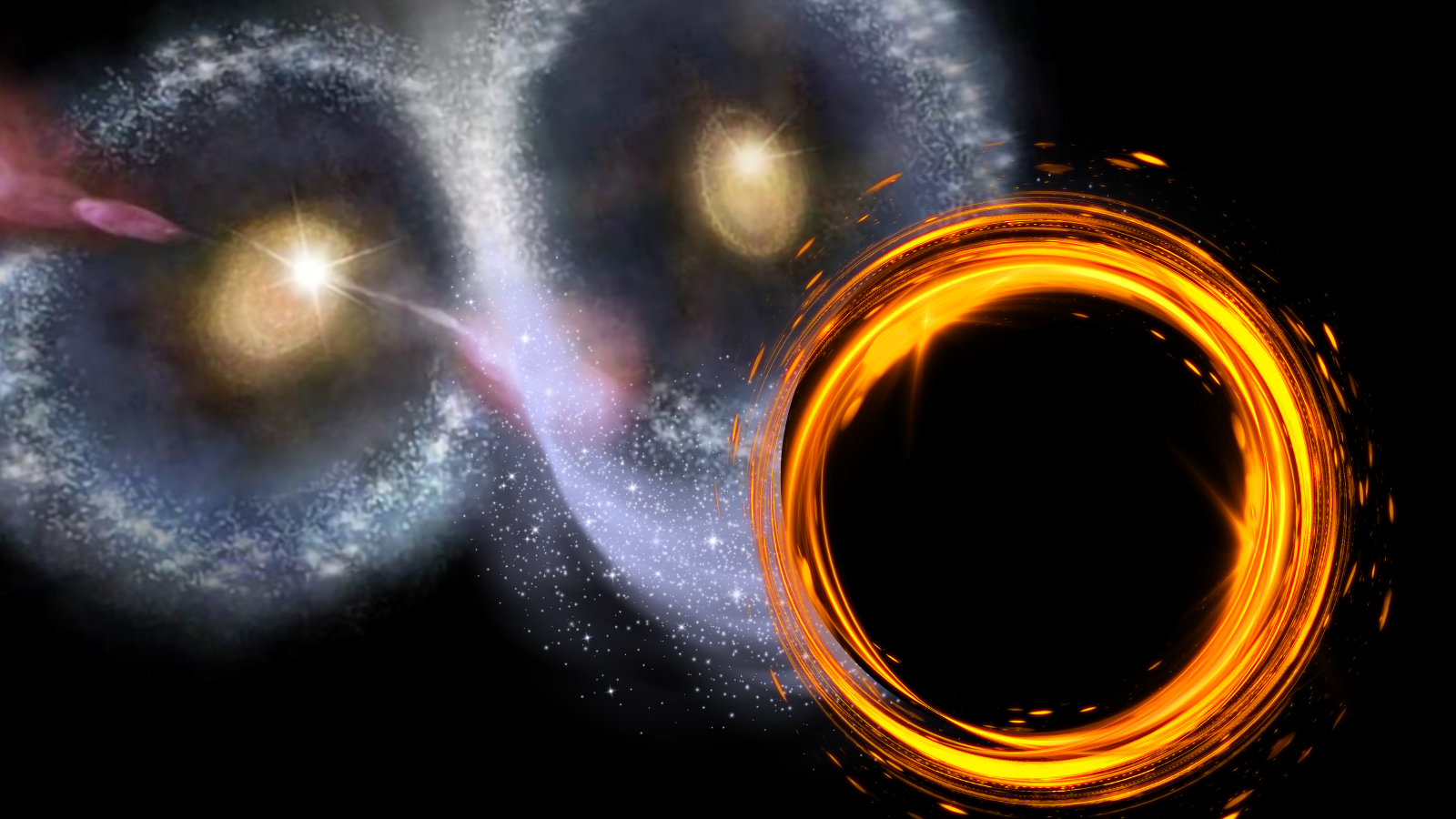Hubble Spies Most Distant, Early Galaxies Yet
Thisstory was updated at 5:56 p.m. ET.
WASHINGTON? The Hubble Space Telescope has taken the deepest look into the universe yet,revealing some of the most distant, earliest galaxies to form after the BigBang.
The imagespeer back about as far as Hubble can look, to about 600 million to 800 millionyears after the theoretical Big Bang, team scientists said. The universe isabout 13.7 billion years old.
"Essentiallywe are looking back 13 billion years" and looking at very faint objects,said Garth Illingworth of the University of California, Santa Cruz. "We'repushing Hubble to the limits to find these objects."
This deeplypenetrating view of the universe, snapped by Hubble over four daysin August, was first revealedlast month. Some of the insights into the early universe gleaned from theseimages, as well as close-ups of some of the most distant known galaxies, wererevealed here today at the 215th meeting of the American Astronomical Society.
Thegalaxies spied in these images are invisible in the visible part of the lightspectrum, but stood out clearly in the infrared images. They are some of theearliest galaxies yet seen.
"Thegalaxies have primordial-like characteristics," Illingworth said, thoughhe cautioned that "we're not finding primordial galaxies." The veryfirst galaxies will take a telescope like the upcoming James Webb SpaceTelescope to find.
Breaking space news, the latest updates on rocket launches, skywatching events and more!
Hubble scientists also assembled a full-color panoramic viewof thousands of galaxies in various stages of assembly. The image, which coversthe range of wavelengths from ultraviolet to near-infrared, was pieced togetherfrom observations by the WFC3 in September and October 2009, as well as 2004images from Hubble's Advanced Camera for Surveys.
The 7,500galaxies in the image show astronomers various stages of galactic evolutionover the history of the universe. The image covers galaxies that existed fromjust 650 million years after the Big Bang to just 1 billion years ago.
Thedistant, young galaxies in the Hubble images still give astronomers a pictureof what the environment of the early universe. By judging the galaxiesages, scientists can guess at when galaxies actually first formed in theuniverse.
"Theseare extremely vigorously star-forming galaxies," Illingworth said.
And bycombining the Hubble images with data from the Spitzer Space Telescope,astronomers can tell that some of the stars in these early galaxies are severalhundred million years old, which suggests that the galaxies themselves beganforming just a few hundred million years after the Big Bang.
"Thefaintest galaxies are now showing signs of linkage to the origin of the firststars," said team member Rychard Bouwens, also of the University ofCalifornia, Santa Cruz. "They are so blue that they must be extremelydeficient in heavy elements, thus representing a population that has nearlyprimordial characteristics."
The galaxiesare very faint and very small, only about 5 percent of the size of the MilkyWay and 1 percent of its mass.
"Theseare the seeds of the great galaxies today," Illingworth said.
The newHubble images also shed light on the universe's so-called reionizationera, the farthest back that astronomers can see. For the first few hundredthousand years after the Big Bang, the universe was a hot, murky mess, with nolight radiating out.
But about400,000 years after the Big Bang, temperatures in the universe cooled,electrons and protons joined to form neutral hydrogen (meaning it had nocharge), and the murk cleared. Some time before 1 billion years after the BigBang, neutral hydrogen began to form stars in the first galaxies, whichradiated energy and changed the hydrogen back to being ionized, or charged.This was what astronomers call the reionization period.
One bigquestions is what exactly in the early universe triggered the ioniziationperiod. Early galaxies are one likely culprit, but astronomers don't yet knowwhether or not these galaxies could put out enough energy to set off thereionization.
Theinfrared images were taken with Hubble's new Wide Field Camera 3, which wasinstalled during Hubble's most recent (and last) servicing mission over thesummer.
- Video - Stunning New Images from Hubble
- Vote: The Best of the Hubble Space Telescope
- Hubble Space Telescope: Greatest Hits

Andrea Thompson is an associate editor at Scientific American, where she covers sustainability, energy and the environment. Prior to that, she was a senior writer covering climate science at Climate Central and a reporter and editor at Live Science, where she primarily covered Earth science and the environment. She holds a graduate degree in science health and environmental reporting from New York University, as well as a bachelor of science and and masters of science in atmospheric chemistry from the Georgia Institute of Technology.
